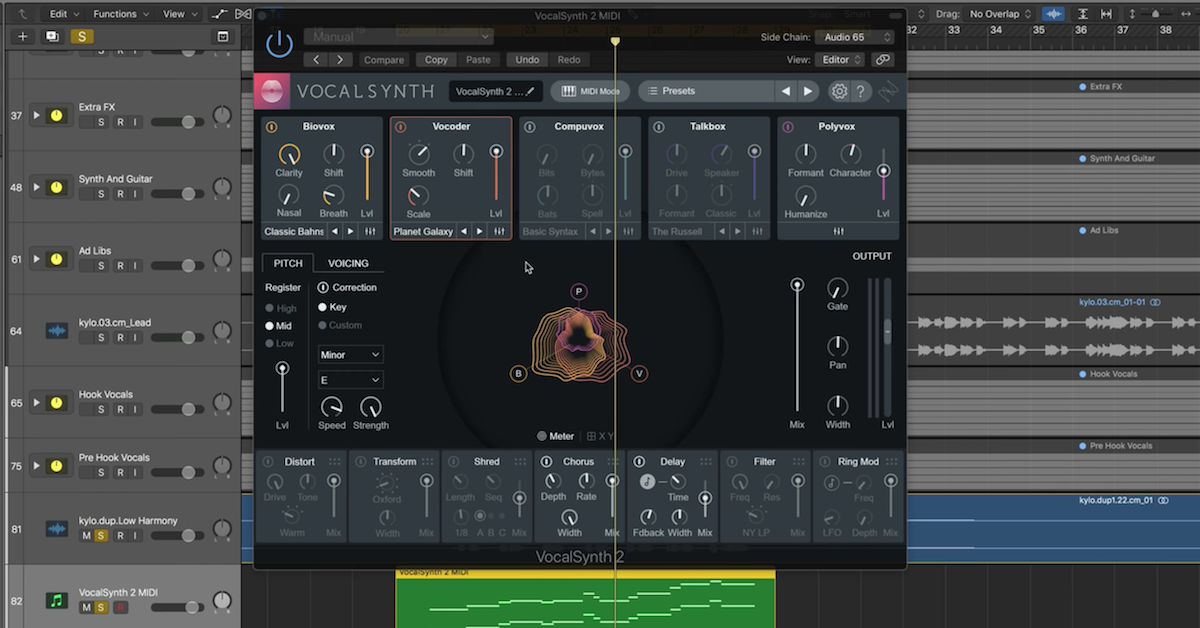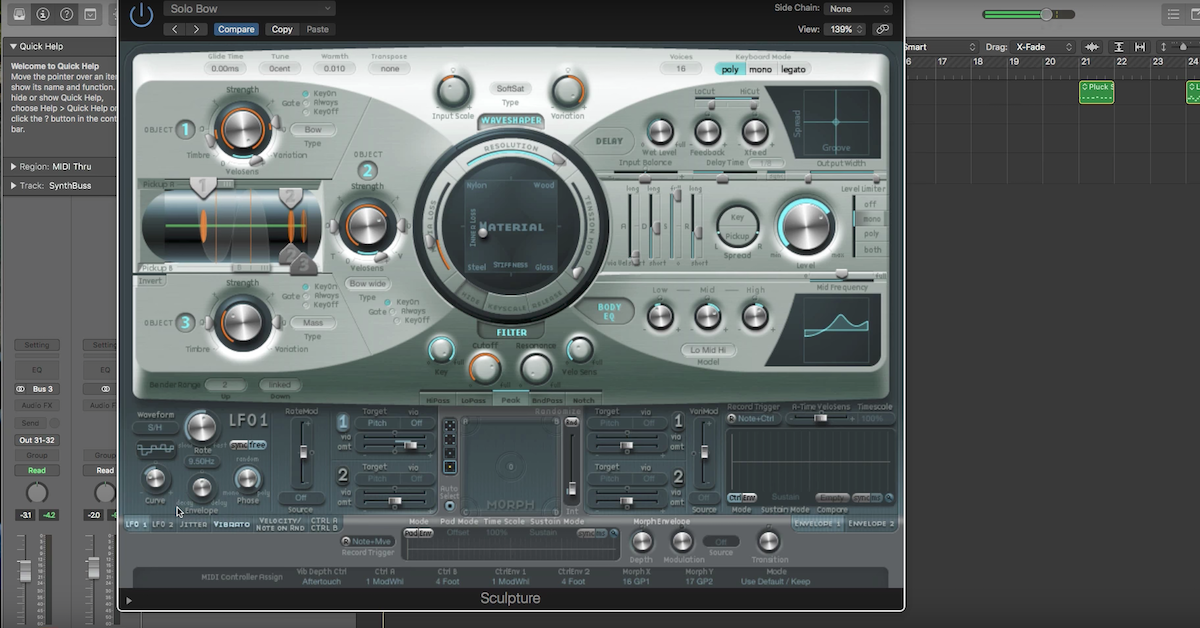9 Must-Have iOS Synth Apps for Music Production
Article Content
If you’ve got an iPhone or iPad, the iOS market is ripe with possibilities for music production and it’s growing every day.
Products that include effects processing, virtual instruments, sequencers, educational apps, recording, mixing & mastering apps and weird interfaces that can’t really be categorized are being offered by major manufacturers alongside hundreds of independent developers.
Protocols like Ableton Link now make it possible to synchronize apps and devices wirelessly with ease. With interfaces like the iConnectAudio and iConnectMIDI series you can route MIDI and audio streams in and out of your iOS devices to your computer and/or controller.
I first got introduced to the world a few years ago by my good friend J.A. Deane (Dino), a sampling pioneer who began live sampling back in the 80’s using tape. I both thank and curse him for leading me down yet another technological rabbit hole. The iOS approach to performance and production offers several benefits that set it apart from using standard plugins in a DAW or traditional MIDI equipment.
Apps Are Cheap
Very cheap! Unbelievably cheap! So cheap that most people would not believe these things really sound that good. But hearing is believing.
Prices range from free (with in-app purchases that usually include additional presets or samples) to maybe $69 at the extreme high end, with the average falling around $10 to $15. This allows you to experiment with a lot of stuff, limited only by the storage capacity of your device. A warning though, as I found out from personal experience, 50 cheap things add up to a couple expensive things. It’s really easy to hit that “get” button.
Functionality
When you buy an app you also get the functionality of the multi-touch screen, accelerometer & gyroscope, along with typical MIDI input and output controls. It’s like buying a virtual instrument and a controller all-in-one.
The additional control offered by tablets and smart phones creates a completely new way of making music that should not be underestimated or simplified. It’s powerful and intuitive, but like any other instrument, it can take some time to develop a genuine facility.
Connectivity and Compactness
The live setup doesn’t get any smaller. In theory, you could perform on just an iPhone. But more typically, you could have an iPad (or two), small interface, mixer, and perhaps a couple of mini MIDI controllers such as those offered by Korg or Akai. Send out a stereo line to the PA and you’re done.
In a home studio situation, you could route the sound into your DAW or drive the iOS device with a DAW-based sequencer or standard MIDI controller. I also use MIRA, an app based extension for Max/MSP that allows wireless control of a Max patch or Max for Live Device.
There are also apps like Lemur that offer customizable and unusual MIDI generating interfaces to control standard computer-based applications. With the right modules, such as the Expert Sleepers FH-1, you can easily drive a Eurorack rig using the MIDI outputs from your iOS device.
Over the next few months I’ll be releasing a series of articles on The Pro Audio Files listing some of the best apps on the market. I’ve intentionally limited my attention to iOS vs the Android platform, based purely on my personal familiarity and admitted bias. But several apps are multi-platform and I invite readers using Android to contribute to the discussion with their own recommendations.
Top iOS Synth Apps and Future Trends
Below are my top 10 must-have synth apps currently available for iOS. In addition, the first two from Moog may foreshadow the world of crossover apps that work both in the iOS realm and on your Mac as a standalone or plugin. They use a VST-wrapper that allows their use in a DAW. As this hybrid world takes shape, users will still in many cases be forced to buy separate versions for each platform, but so far the prices remain reasonable. In theory, iOS apps use the same chip architecture as the new Apple Silicon M1 chips and in the beginning, could have worked on any Mac with the M1 chip. But that door was quickly slammed shut once Apple gave developers the choice to opt-out of making their software accessible on a Mac. Clearly, it is all about maintaining independent incomes streams and I can’t say I blame them. In the meantime, it’s great to see Moog leading the way yet again.
1. Moog Model 15
Billed as a Moog Modular synthesizer and synthesis educational tool, this app emulates the iconic hardware classic of the same name and offers incredibly rich sounds that will surprise even the most vociferous iPad skeptics. It includes a keyboard, Animoog style sliders and a built-in arpeggiator. It also offers tutorials that teach basic signal flows for a modular synthesizer. The sounds are great and the filter comes as close as possible to what you’d find in a hardware synth! App Store link.
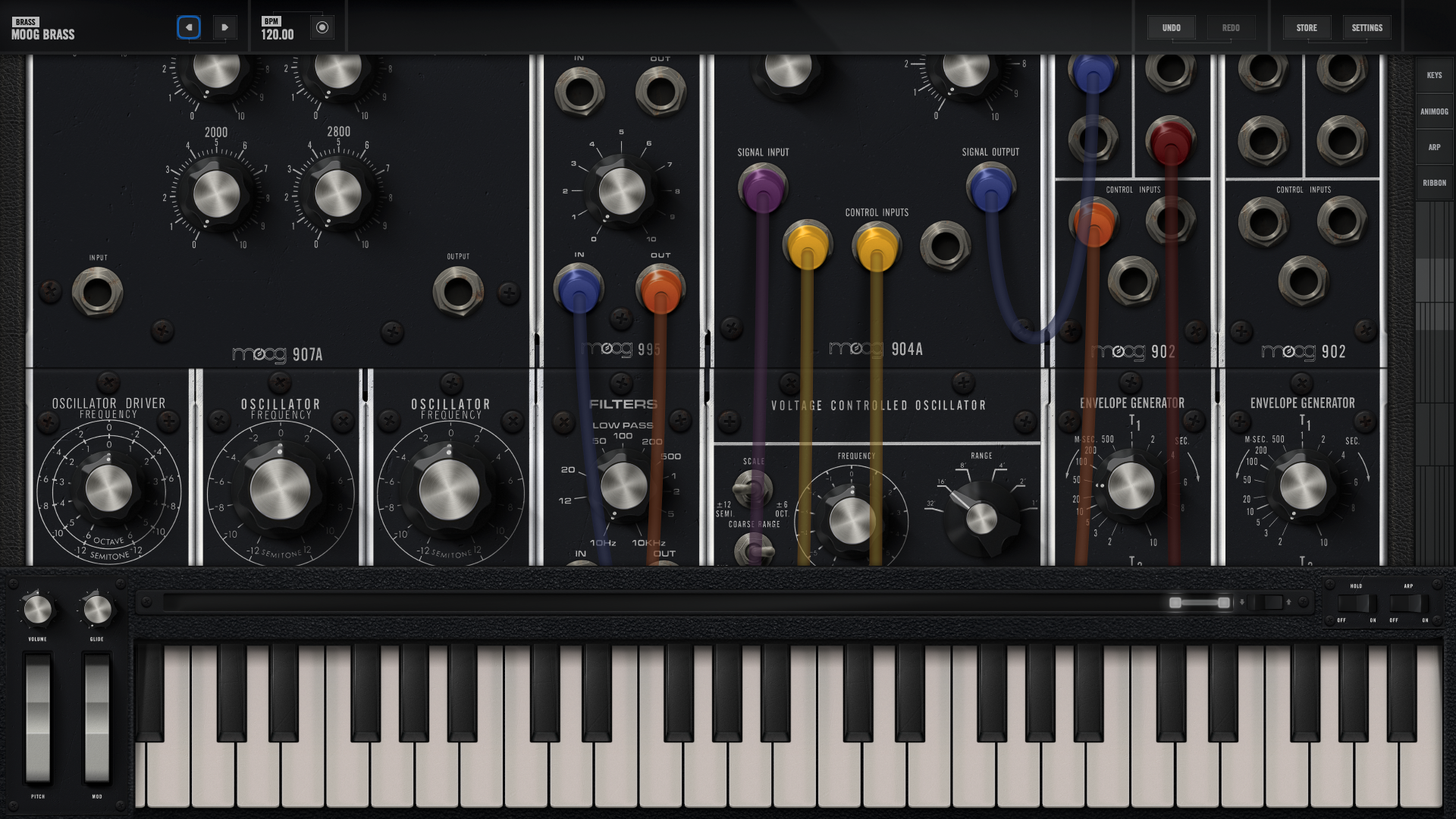
2. Moog Animoog Z
This app has stunning graphics and really rich sounds. While there are several in-app purchases to tease you, the free version sounds great right out of the virtual box and is capable of 16 voice polyphony. At the heart of the GUI is the imager described by Moog as:
“Powered by Moog’s Anisotropic Synth Engine (ASE), Animoog Z empowers you to visually traverse new sonic universes and even create your own! ASE utilizes a novel orbit system to expand the concepts of wavetable and vector synthesis, allowing you to navigate dynamically through the X, Y, and Z axes of sound. Spontaneous sound design with Animoog Z is easy—simply select and drag the orbit path to explore endless sonic configurations.”
A fantastic device for both eyes and ears! App Store link.
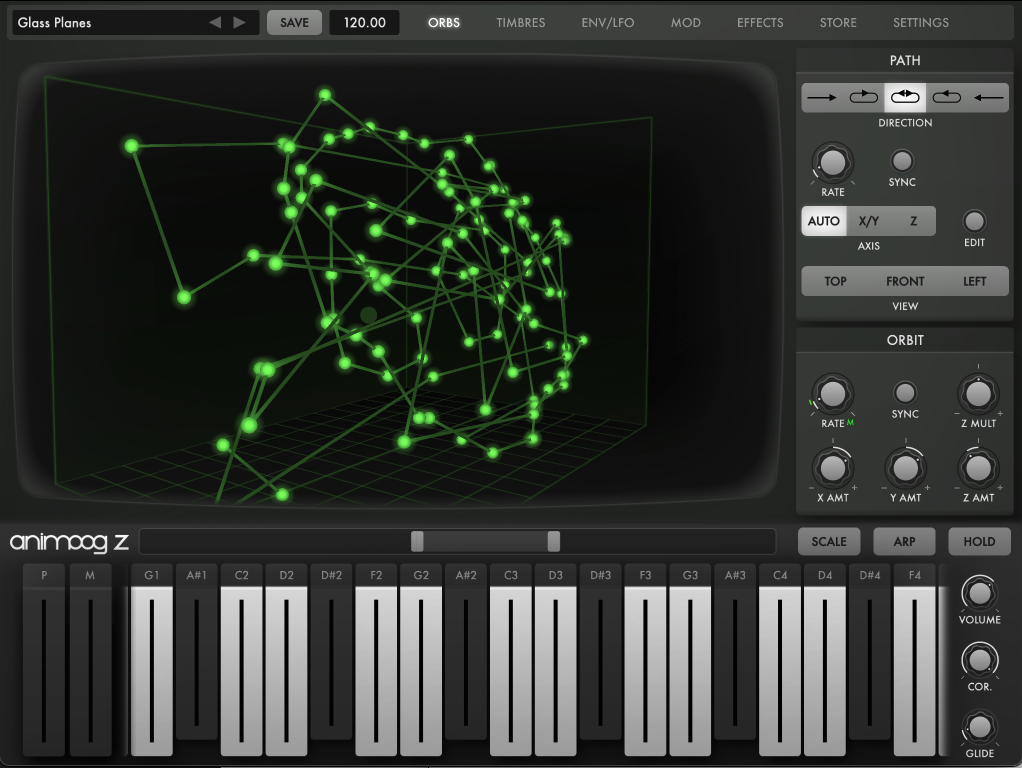
3. Arturia iSEM
Arturia’s vintage synth emulation collection includes great sounding instruments that are worth the money, if you can’t have the real thing. iSEM is an Oberheim emulation. App Store link.
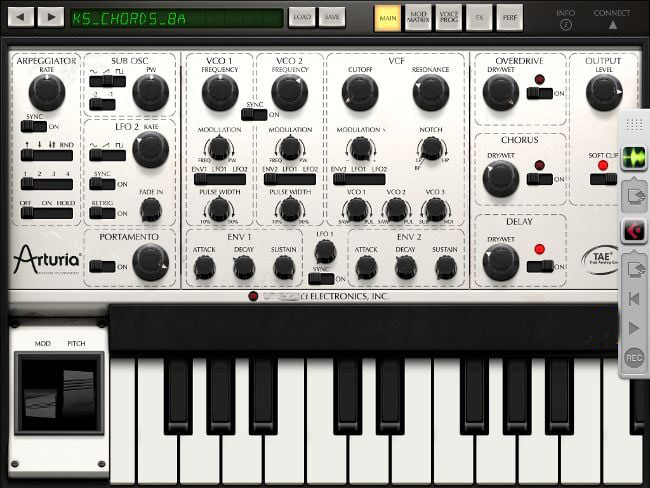
4. Arturia iProphet
This is an emulation of the classic Dave Smith instrument. App Store link.
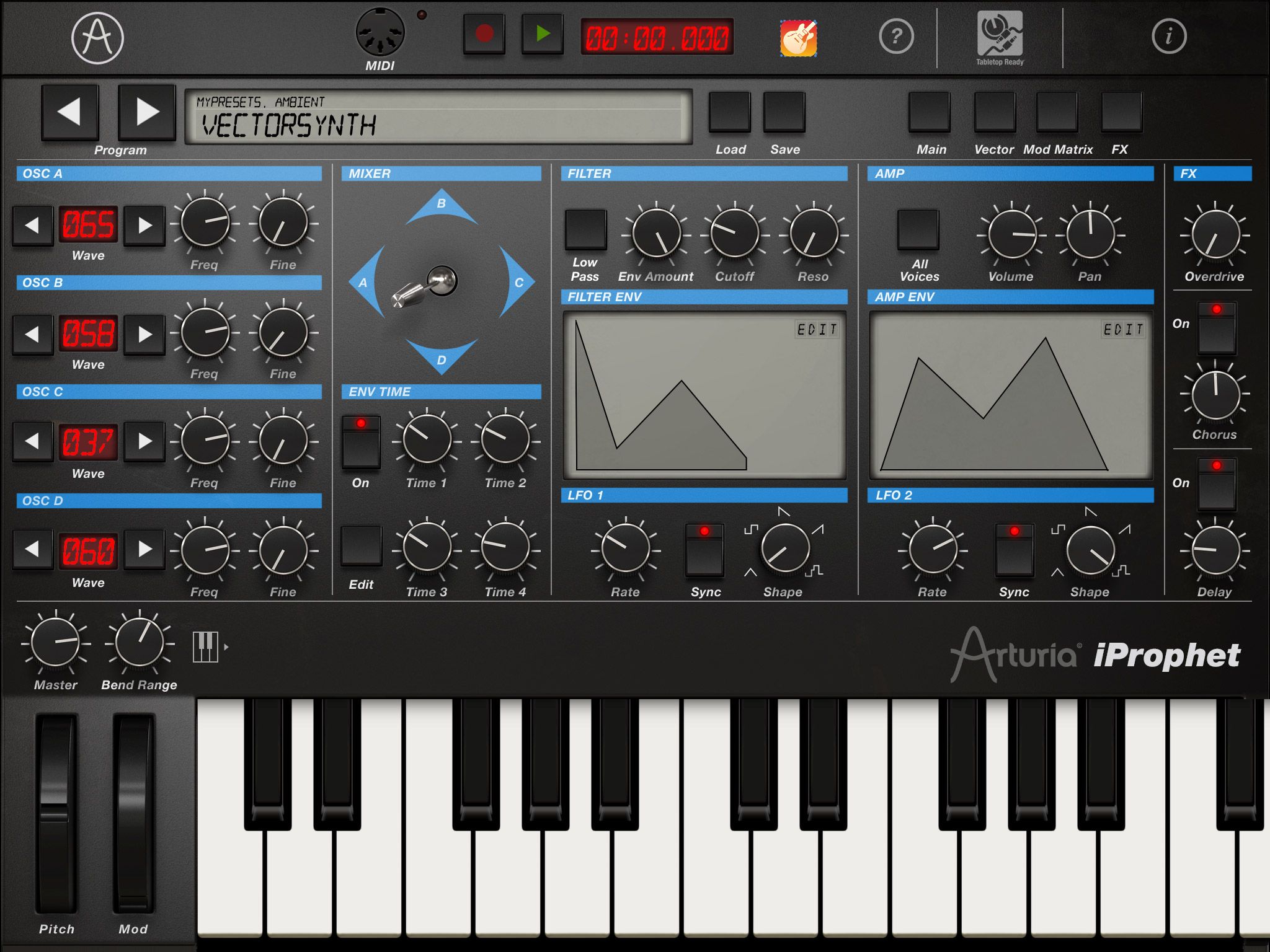
5. Arturia iMini
This is an emulation of the classic Minimoog. App Store link.
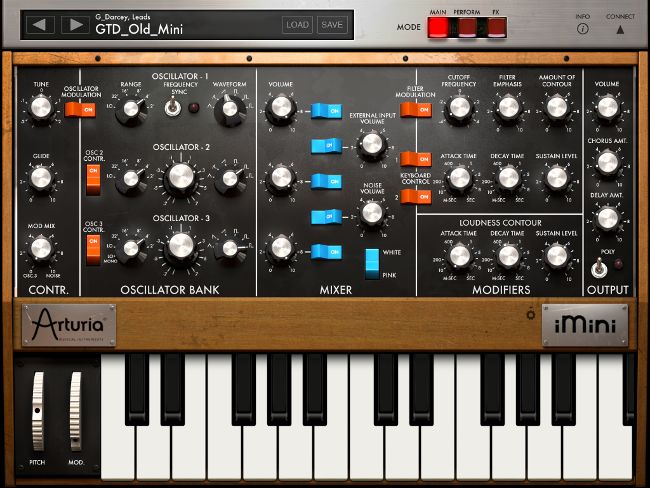
6. iceGear Lorentz
This is a straight-ahead polyphonic synth with no frills and no fancy interface. But it’s intuitive and sounds great. All the controls are accessible on the main screen with the exception of the arpeggiator. App Store link.
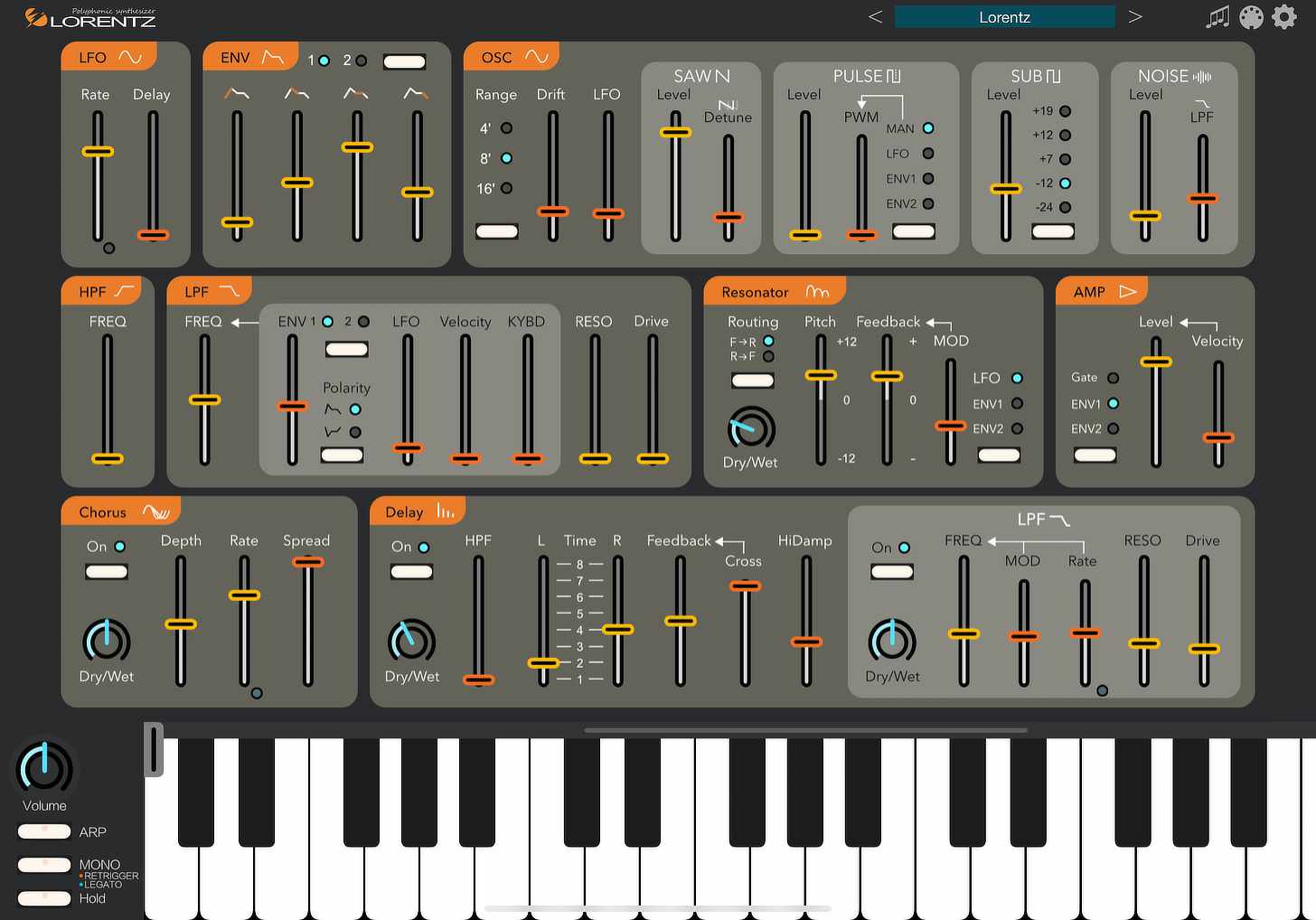
7. iceGear Laplace Resonator
Here we’ve got a component modeling style synth. In terms of price, functionality, simplicity of design and sound, you can’t go wrong. App Store link.
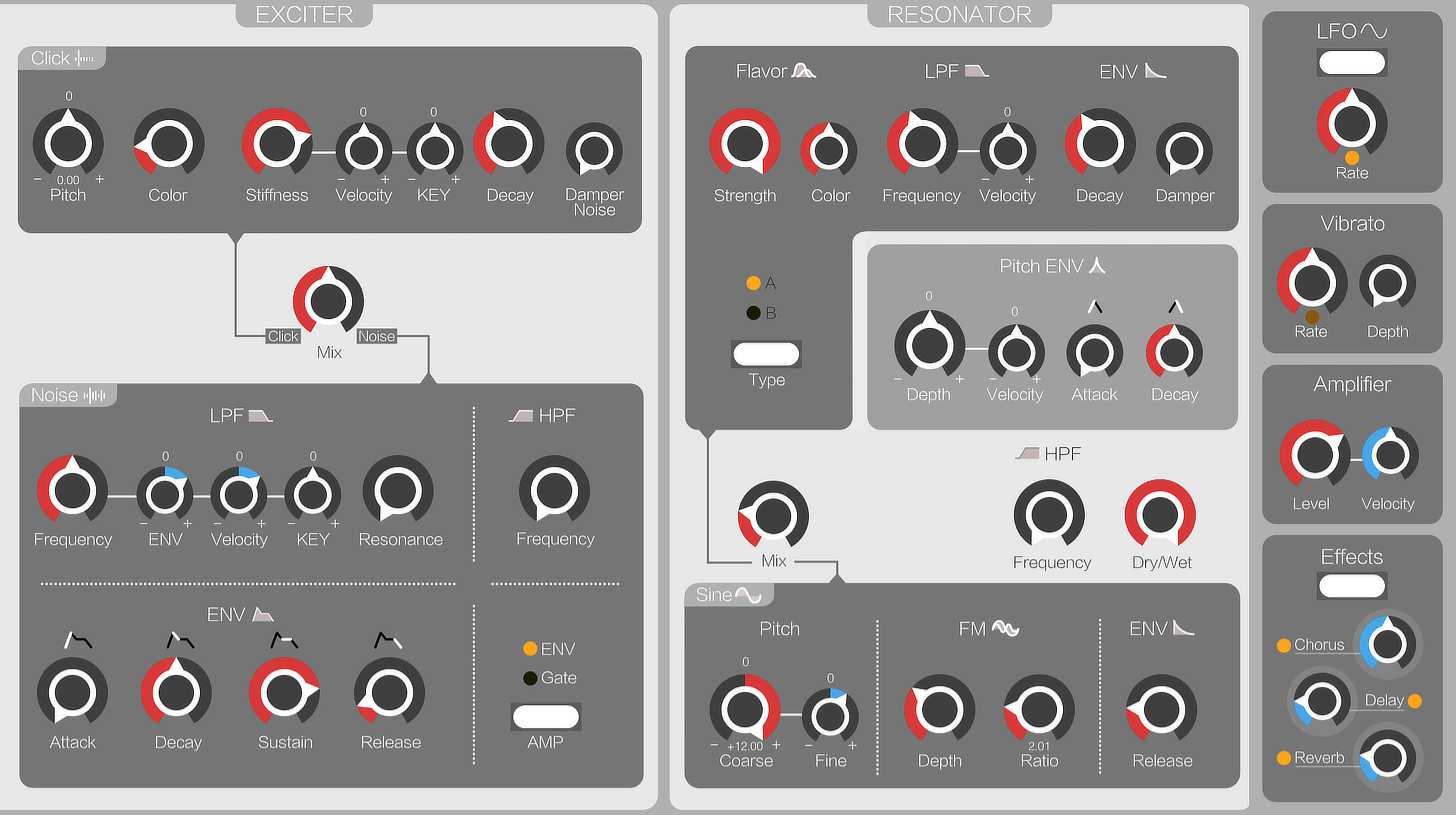
8. Waldorf Nave
Nave is a wavetable synthesizer by Waldorf that launches with a touchable 3D wavetable display that will keep you occupied for several minutes before you even make a sound. But when you do, you’ll find tons of functionality hidden beneath four other display tabs: filter and env, mod & keys, FX & arp, and tape & sys which is a tape style display for recording and loading samples. App Store link.
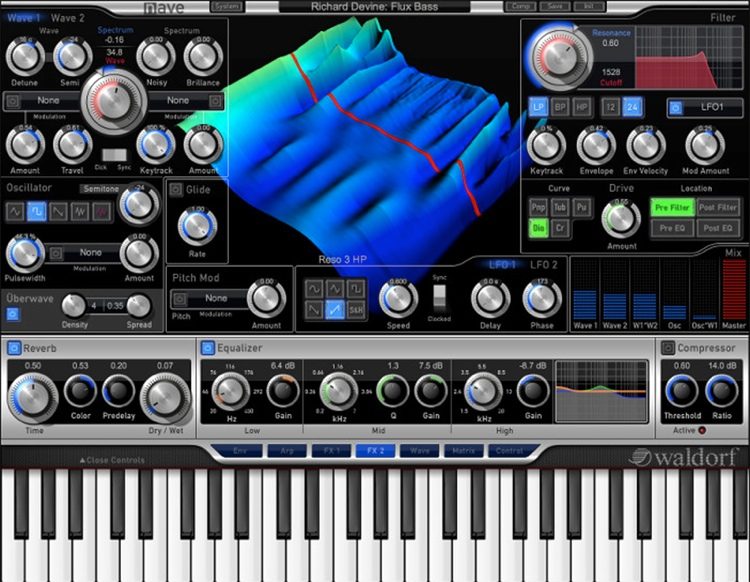
9. Apple Alchemy
This is an iPad version of the awesome virtual instrument plugin of the same name. It’s a hidden surprise accessible through the GarageBand app when initiating a keyboard instrument track. If you’ve used Alchemy in Logic Pro, you’ll appreciate the familiar performance pad with added sparkling animations. While it lacks the same controllability as the plugin version, it is nonetheless a great sounding device. Free with GarageBand.
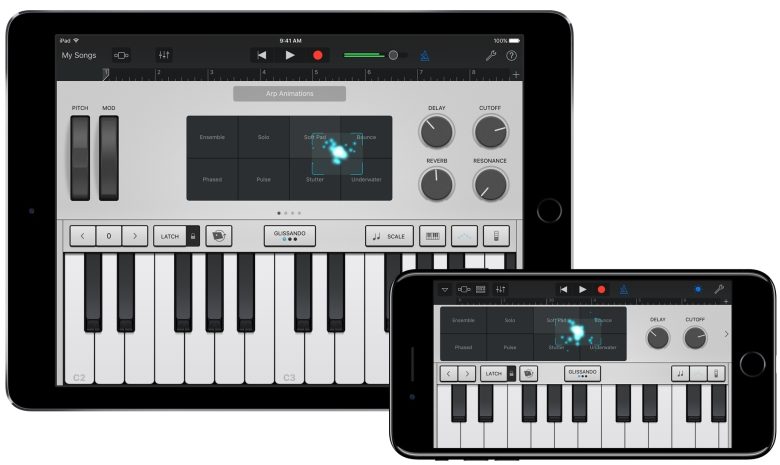
There are other great music making apps aside from the synths. Have a look at the sample-based players below for hours of fun and enjoyment!
ThumbJam and DrumJam (Pete Lockett & Sonosaurus LLC — App Store link) are player-friendly samplers that include a decent set of instrument sounds and unique playing interfaces that are just plain fun. Both include a fully accessible user manual including MIDI implementation data. Presets in the Thumb Jam app describe the additional control settings such as v. tilt, finger pressure, x axis, etc. App Store link.
Seaboard 5D is Roli’s entry into the iPad world and the interface is really fun to play. It’s a simple design but very expressive with several juicy presets. It lacks the flexibility and configuration possibilities of other apps mentioned here, but the Roli style keyboard is very addictive. (Free — App Store link)
Note: Most “free” apps will have in-app purchases once you’re hooked. Hey, everyone’s got to make a buck.
Next time, I’ll talk about some of the most unusual and bizarre sound-producing apps out there, for all you experimentalists lurking in the shadows. Stay tuned!
Check out my other articles, reviews and interviews
Follow me on Twitter / Instagram / YouTube



